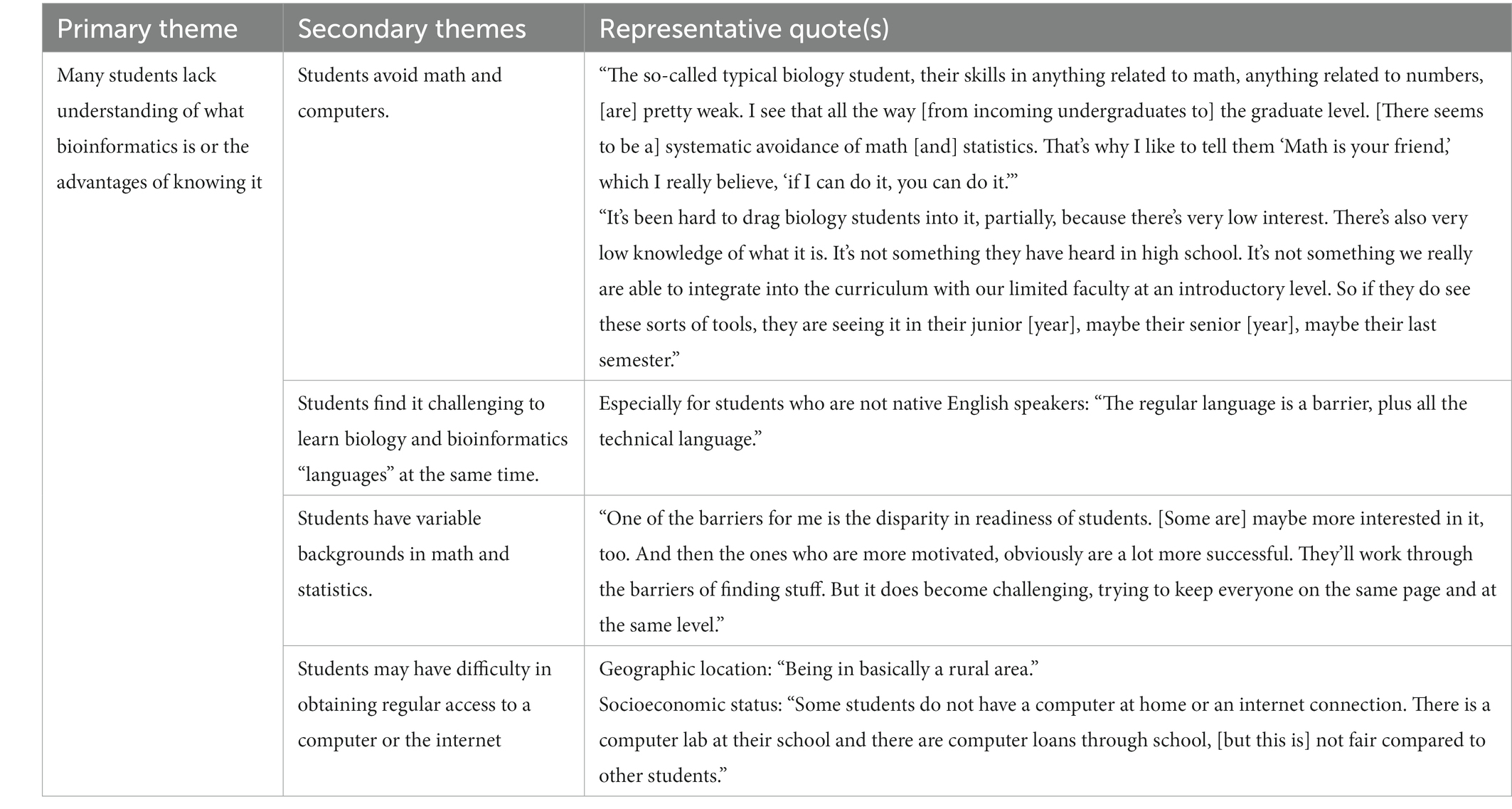The Single Strategy To Use For Bioinformatics Tutor
The Single Strategy To Use For Bioinformatics Tutor
Blog Article
The Basic Principles Of Bioinformatics Tutor
Table of ContentsThe Best Guide To Bioinformatics TutorBioinformatics Tutor for BeginnersSome Of Bioinformatics Tutor8 Simple Techniques For Bioinformatics TutorMore About Bioinformatics Tutor
Of the total amount individuals included in the training, 80% were pupils from public higher education establishments, while the continuing to be 20% came from personal institutions. To get approved for a certification of involvement, pupils were required to attend a minimum of 90% of the total training hours. As a result of this demand, an outstanding 95% of the participants effectively gotten their certificates, having not just fulfilled the minimum presence requirements but additionally completed all assigned activities throughout the training.
During the elevation of the COVID-19 pandemic, particularly in between June and August 2020, the project group was tasked with arranging specialized training in bioinformatics. This training was especially focused on students from the study team Nucleus for Study in Applied Computing at the Federal University of Pará (UFRA) The adjustment to remote knowing systems due to the pandemic developed a possibility to explore brand-new teaching methods and electronic devices that improved both reach and efficiency.
To react to the growing need in the computer and life sciences areas, a sophisticated course was introduced in 2020 labelled Introduction to Equipment Understanding. This training course was developed to provide an accessible yet thorough overview of Artificial Intelligence methods, specifically as applied in bioinformatics. The program was executed over three months, from October to December 2020, and was supplied completely online with the Google Meet system. This online layout made it possible for engagement from students across Brazil, most of whom might not have had the possibility to participate in in-person sessions.
6 Simple Techniques For Bioinformatics Tutor
About 50% of the total training hours were committed to practical tasks where pupils built intelligent versions and applications in an array of scientific domain names, including genetics, molecular biology, and ecological data analysis. These systems enabled students to engage in real-time data adjustment, version training, and formula experimentation.
Sixty of them were connected with numerous higher education institutions in the state of Pará, while the staying twenty came from establishments located in 5 other Brazilian states. By introducing Artificial Knowledge in a relevant and sensible context, the effort served to connect the gap between concept and real-world application, giving pupils with a strong foundation for future study or work in the area.
The training effort formed component of a more comprehensive academic outreach effort called the Bioinformatics when driving task. This project has, over the years, presented dozens of pupils to the world of bioinformatics and computational biology. The events held under this umbrella effort have occurred throughout numerous areas and years, as summed up in Table 1 (Checklist of events, areas, years, and overall numbers of pupils and teachers)
Among one of the most impressive end results of the Bioinformatics when driving initiative has been its payment to the development of decentralized research study groups. Numerous of these teams, at first brought with each other by their involvement in training occasions, have actually since gone on to produce independent scientific research study in cooperation with local academic organizations. The training not only cultivated clinical reasoning within the context of bioinformatics but also stimulated joint connections that extended past the training environment. These cooperations have actually brought about raised neighborhood scientific efficiency and contributed meaningfully to the growth of the more comprehensive bioinformatics neighborhood in Brazil.
Some Known Factual Statements About Bioinformatics Tutor
The project itself was conceptualized and arranged by MB and RR, that oversaw the preparation and implementation of each step. Lectures were provided by a multidisciplinary group containing MB, FA, blog here EF, KP, JS, DM, SN, LP, LG, AIR CONDITIONING, rr, and ih. The exact same team, leaving out IH and RR, additionally worked as tutors for the sensible training modules. Financing for the job was provided via the grant 88887.200562/ 2018-00 from CAPES. The writers expand their gratefulness to everyone who added to the awareness of this project, whether directly or indirectly, since its beginning.
The Federal University of Pará's Workplace of Research study (PROPESP/UFPA) also offered financial backing, especially for the production of the last manuscript. The writers proclaim no business or economic conflicts additional hints of rate of interest that can have affected the research. Moreover, all analyses and viewpoints shared in this article are exclusively those of the writers and do not necessarily reflect those of their particular institutions, the publisher, editors, or customers involved in the publication process.

The Only Guide to Bioinformatics Tutor
From an instructional perspective, the teaching method utilized in the training was purposefully interactive. Classes were carried out in a way that encouraged pupil engagement and discussion, going beyond memorizing memorization to explore just how ideas are developed, applied in every day life, and tested in scholastic setups. The educational ideology focused on supporting both strong and struggling pupils, giving personalized assistance, and building self-confidence with continual mentorship and patience.

Each team, containing about 36 individuals, was supported by three coaches-- the majority of whom were postdoctoral researchers with specific know-how. These advisors not only assisted create the team tasks yet likewise facilitated their implementation, ensuring that each research study concern was both appropriate and appropriately challenging. The goal was to give a naturally reasonable context that individuals could check out through flexible purposes and accessibility to curated datasets.
For additional insights right into the approach and end results of this project-based knowing method, viewers are routed to S1 Text, which includes detailed descriptions of the pedagogical structure, examination approaches, and job themes made use of in the training sessions.
The 3-Minute Rule for Bioinformatics Tutor
Of the total participants entailed in the training, 80% were trainees from public go to my site higher education and learning institutions, while the remaining 20% came from exclusive institutions. To certify for a certification of involvement, pupils were called for to go to at least 90% of the overall training hours. Significantly, beyond the students who registered in the training sessions, 7 knowledgeable teachers took part in delivering the training courses, while 3 specialized research study professors collaborated the total training process. About 50% of the overall training hours were dedicated to useful activities where students built intelligent models and applications in an array of clinical domains, consisting of genetics, molecular biology, and ecological information evaluation. The training not only fostered clinical thinking within the context of bioinformatics however likewise sparked collective relationships that prolonged past the training atmosphere.
Report this page